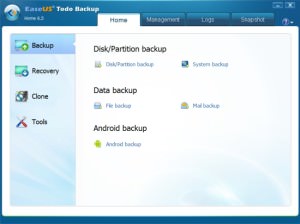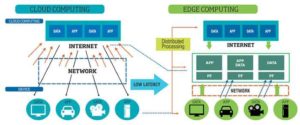Edge Computing Forms Major Part of Tech Growth to Improve Traffic to Your Site
COVID pandemic is making people more and more irritated with passing day. But, even in such a scenario, industry analysts are predicting the significant growth of edge computing along with a complimentary 5G network. Some research panels indicate that the market for edge computing can easily hike up to $43.4 billion from $3.5 billion within 2027. Most of the cloud vendors are working harder than usual to deploy extra edge servers in their local markets. A separate team is working on 5G deployment as well. These teams are spending maximum time on 5G capabilities, which will increase again next year.
Understanding the power of edge:
In generic term, Edge is considered as a distributed network-based infrastructure approach. It can help to process data and analyze it closer to the primary source. This sector has significant value for enterprises, mainly artificial Intelligence, IoT, and the current area of big data analytics. It is better to process collected data and share some of the timely insights to turn the edge devices a bit smarter. It helps to take some proper actions too when the time feels right.
- Edge computing is a popular science to let the edge devices perform without the need to transport data to another server.
- Edge computing can always bring in some data and compute to the close interactive point. The entire benefit of this computing lies with the opportunity it provides.
The time has come for extra speed:
The existing network architectures were not crafted for localized compute and distributed insights, where the future devices are connected. So, there will be a variable dependency on latency-sensitive applications.
- It is vital for intelligence and computes to move towards the edge, to serve computing and communications, sensors, resources, and data.
- Even though the centralized cloud architectures and core networks can support a proficient use of smart devices to some extent, the same architecture finds it challenging to handle maximum data. This data gets created at the edge by more than 75 billion devices, which are predicted to get active by 2025.
- Smart devices alongside other cloud-based communicative items need lower latencies when compared to the traditional core networking architectures.
- Proximate and localized edge data centers can alleviate network bottlenecks. The same source helps in reducing latency and even improve performance rate. They work it this way by looking at the edge and working as local gateways to address higher-speed connections.
Recent surveys and their results:
Some of the top-notch surveys have already talked about the growing demand for edge computing and how it changes the future technical world. Joining https://blastup.com helps you learn a bit more about these points with ease.
- Deloitte hosted the Technology Industrial Outlook in 2020, which states that with the rise of AI and cloud deployment rate, the chances are high that edge computing might be joining this mix very soon.
- According to the IDC top 10 IT predictions of 2020, the time has come to build out edge computing. It seems that the number of apps at edge computing hikes up by 800% by 2024.
- The Gartner report states that there will be a 20 times increase in the IoT devices by 2023. So, there is going to be a complete necessity of significant applications, coming closer to devices and users.
- Edge computing seems to be leaping, according to the Forrester Survey. The biggest drive in this stage was associated with handling AI demands, reducing networking processing and latency that the cloud failed to support.
Adopting the most exceptional edge computing solutions:
The banking and financial industry is always expected to show a proper adoption of this edge computing procedure because of the increased adoption of mobile and digital banking sectors. There can also be the adoption of block chain technology with mobile payments, fueling the situation further.
- For enhancing the digitalized banking experience, digital payment methods with higher speed and maximum security play significant roles. So, various banks are now deploying these payment apps and services, made compatible with smarter mobile devices.
- Mobile payment and applications remain a significant source for edge computing in the banking and financial industry. Third-party applications are showing their support as well, with more extensive banking application choices. These choices help engage customers through some of the loyalty management programs.
- There is a significant spread of block chain adoption. It helps in driving the consumption of edge-based computing services to a whole new level. Block chain technology needs higher computing services; this sector showcases faster edge computing adoption techniques.
The increasing notion of multivendor partnerships:
Enterprise IT leaders are now all set to use various vendors for edge computing because edge computing is not a single program but enabled by multiple techniques. Within a short time, the industrial sector might catch up with ecosystem partnerships. The primary goal is to bring the hardware, software vendors, consultancies, and telecommunication firms together. This gathering helps to develop and even support the present enterprise based deployments. This partnership ecosystem will change the perception of edge computing towards betterment.
Customized form factors:
In this year 2020, form, fit, and function get to drive the development of the customized form factors. Here, you get the opportunity to characterize edge computing in various application areas and under multiple industries. Unique storage, compute, and networking demands help to develop customized form factors. IT all starts at the processor level.
You can get to see one significant example in HPE, which leads Series C investment to around$145 million with the former CEO of Cisco. It helps in bringing in a customized based programmable processor in the market for optimizing edge computing.
From the points mentioned already, it is clear that the edge cloud and computing market is here to stay and grow, by minimum 505. All the primary IT professionals, from mega cloud providers to content delivery networks, are working to present underlying IaaS and advanced cloud programming services. So, edge computing is on a hike these days and the popularity is likely to grow more in upcoming years.







